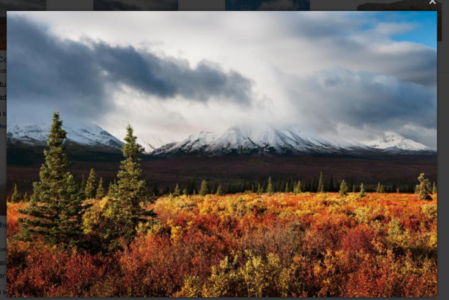Story written by Riley Sessanna, Nick Zaremba, and Rose Louk
 Climate change may result in broad effects to our most treasured scenic getaways, the National Parks. Initial reactions may be to consider how warmer temperatures will impact wildlife or other natural beauties such as glaciers. However, it is also important for park management to better understand how climate change will affect park attendance, so that resources can be focused in areas that will be impacted the most. Attendance is generally dependent on the mean monthly temperatures of a park; more people visit parks when temperatures are favorable. Parks such as Volcanoes National Park in Hawaii, which has a pleasant temperature year-round, has consistent attendance throughout the year; while parks located in colder climates tend to have higher attendance in the warm summer months and few visitors in the winter. An interesting case study by Albano et al. (2013) examined climate change’s impact on attendance in three National Parks in Alaska. This study predicted an increase in park attendance in the coming years, based on a growing “peak season,” which follows a longer period of favorable climate.
Climate change may result in broad effects to our most treasured scenic getaways, the National Parks. Initial reactions may be to consider how warmer temperatures will impact wildlife or other natural beauties such as glaciers. However, it is also important for park management to better understand how climate change will affect park attendance, so that resources can be focused in areas that will be impacted the most. Attendance is generally dependent on the mean monthly temperatures of a park; more people visit parks when temperatures are favorable. Parks such as Volcanoes National Park in Hawaii, which has a pleasant temperature year-round, has consistent attendance throughout the year; while parks located in colder climates tend to have higher attendance in the warm summer months and few visitors in the winter. An interesting case study by Albano et al. (2013) examined climate change’s impact on attendance in three National Parks in Alaska. This study predicted an increase in park attendance in the coming years, based on a growing “peak season,” which follows a longer period of favorable climate.
With climate change impacting the National Parks in a diverse number of ways, there will be a need for more research and employees in the parks. A survey of professionals and students found that experience, social connectivity, character, focused education, and having a foot in the door are essential for success in the career sector (Browning et al. 2017). There are also a number of funding opportunities for those interested in doing research in the parks. Grants are available through the National Park Foundation and internships are offered by the Geoscientists in the Park Program. Both opportunities can provide the experience and social connectivity necessary for a career in the National Parks. Water-Energy Seminar students had a roundtable discussion about the various impacts of climate change on parks, how our research can be applied to parks, and how to get an internship or job in the National Parks.
On November 9th, Ed Harvey spoke to EMPOWER students about water resource stewardship in the U.S. National Park Service (NPS). In this talk, he explained that National Parks are set aside for the enjoyment of the public and conserved with the goal of leaving them unimpaired for future generations. With this balance of conservation and enjoyment, there are “inherited” challenges of managing old infrastructure like dams and gas stations, mining operations that are contaminating the land, and people living in the parks (“inholdings”) who require a source of water in a place where the water is protected. There is also the issue of changing climate conditions bringing about disasters like floods and landslides that damage the parks and can endanger visitors. Furthermore, Ed Harvey explained that the allocation of the NPS budget and employee distribution is geared more towards public enjoyment of the parks than conservation. He closed with an explanation of how park decisions extend beyond science alone to include cultural resource considerations, socio-economic impacts, politics, and public opinion. Overall, stewardship must respond to dynamic changes in the environment while including the diverse interests of everyone involved.
Photographs from https://nature.nps.gov/geology/education/images.cfm